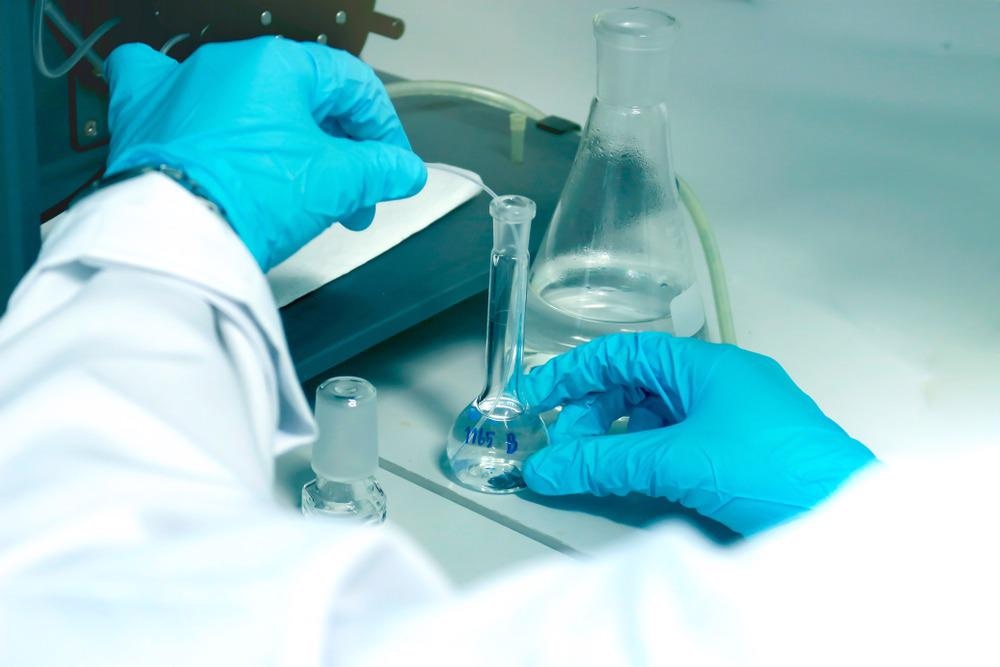A novel technique to detect phenolic compounds within the ecosystem is presented in the study published in the journal Food and Chemical Toxicology.

Study: Tailoring the heterojunction of TiO2 with multivalence CeO2 nanocrystals - for detection of toxic 2-aminophenol. Image Credit: Stella_E/Shutterstock.com
Dangers of Phenolic Compounds
Humans and ecosystems have been greatly concerned by the widespread discharge of phenol-based compounds as harmful pollutants from businesses into water supplies. These phenolic compounds are utilized as biochemical intermediaries in various processing industries. To halt their impact on the environment, phenolic compounds must first be carefully detected.
Under normal conditions, 2-aminophenol (AP), a phenolic compound, is far less toxic to humans; however, acute investigations in humans revealed that intravenous administration of 2-AP can cause methemoglobinemia, hence determining the toxicity levels of 2-AP is critical.
Electrochemical Detection of Aminophenol
Recently, electrode modification using inorganic nanomaterials has evolved as an important modification technique due to its reduced cost, controlled production, structural/compositional flexibility, and programmable valance states.
The unusual production of binary metallic oxides using titanium dioxide (TiO2) has garnered great interest for use as an active nanomaterial in photocatalytic activity and in electrochemical detection of different analytes.
TiO2 is known for its strong mechanical strength, broad bandgap, non-toxic nature, and biological activity sustainability. It was illustrated that the intriguing characteristic of TiO2's MP architecture helps to stimulate quick sensing via diffusion, attracting multiple researchers to integrate a broad range of metallic oxides in their respective research.
Cerium Oxide-based Nanocomposites
Cerium oxide (CeO2) is a low-cost, biocompatible binary metallic oxide with an adjustable oxidation state that is commonly utilized as a transporter in catalytic conversion processes.
There are multiple binary metallic oxide nanocomposites based on CeO2 that have been used for electrochemical detection of different hazardous chemicals. Owing to its non-toxicity and low cost, the blend of CeO2 as a binary metallic oxide with TiO2 is regarded as a substantially more critical functional nanomaterial (CeO2-TiO2) when compared with other binary metallic oxides.
Advantages of CeO2-TiO2 Nanocomposites
With the existence of multivalent phases in CeO2, the CeO2-TiO2-based nanocomposite has an abundance of oxygen vacancies, promoting composite conductivity via high electron mobility.
Due to its excellent physicochemical characteristics, textural properties, and electrical features, CeO2-TiO2 nanocomposites have emerged as innovative binary heterostructure systems.
As a result, the mixture of CeO2-TiO2 may provide a viable electrode material that possesses high conductivity, a broad active surface area, and various valence phases, phases in which the particular Ce element can be successfully stabilized.
Aim of the Research
The team aimed to create a CeO2-TiO2 nanocomposite to study the shape, composition, and valence phases for electrochemical detection of 2-AP.
The preparatory work of CeO2-TiO2 encompasses a 2-step plan: the initial step refers to the creation of MP structures on TiO2 surfaces using a sol-gel method, and the final step involves loading CeO2 nanocrystals (NCs) on TiO2 supports using a thermal decomposition and sol-gel-based technique to gather CeO2-TiO2 nanocomposites.
Key Findings of the Study
To summarize, the team created a heterojunction CeO2-TiO2 nanocomposite with adjustable binary metallic oxide valence states adorned on TiO2 MP sites for electrochemical detection of 2-AP.
The team highlighted that this strategy of integrating binary metallic oxides on the TiO2 surface has several benefits, including the formation of an MP structure on the surface of TiO2, which allows for the loading of binary metallic oxides, resulting in a significantly high quantity of oxygen defects. Another benefit was the combined effect of earthing and calcination allowed for more efficient loading of Ce on the MP sites of TiO2.
The team also pointed out that the considerable loading of CeO2 NCs on TiO2 has a huge surface area containing many active sites. This existence of a high quantity of active sites allows for quick diffusion at the surface with a high electron transmission rate, resulting in good electrooxidation of 2-AP.
The team emphasized that the CeO2-TiO2 altered electrode demonstrated a broad linear range, high sensitivity, and extremely low detection limit, and the measured results are far superior to previous results on sensing of 2-AP.
The use of CeO2-TiO2 nanocomposites is a viable approach for improving the electrochemical responsiveness of 2-AP.
Reference
Manoj, D., Rajendran, S., Vasseghian, Y., Ansar, S., Gracia, F., & Moscoso, M. (2022). Tailoring the heterojunction of TiO2 with multivalence CeO2 nanocrystals - for detection of toxic 2-aminophenol. Food and Chemical Toxicology. Available at: https://www.sciencedirect.com/science/article/pii/S0278691522003805?via%3Dihub
Disclaimer: The views expressed here are those of the author expressed in their private capacity and do not necessarily represent the views of AZoM.com Limited T/A AZoNetwork the owner and operator of this website. This disclaimer forms part of the Terms and conditions of use of this website.